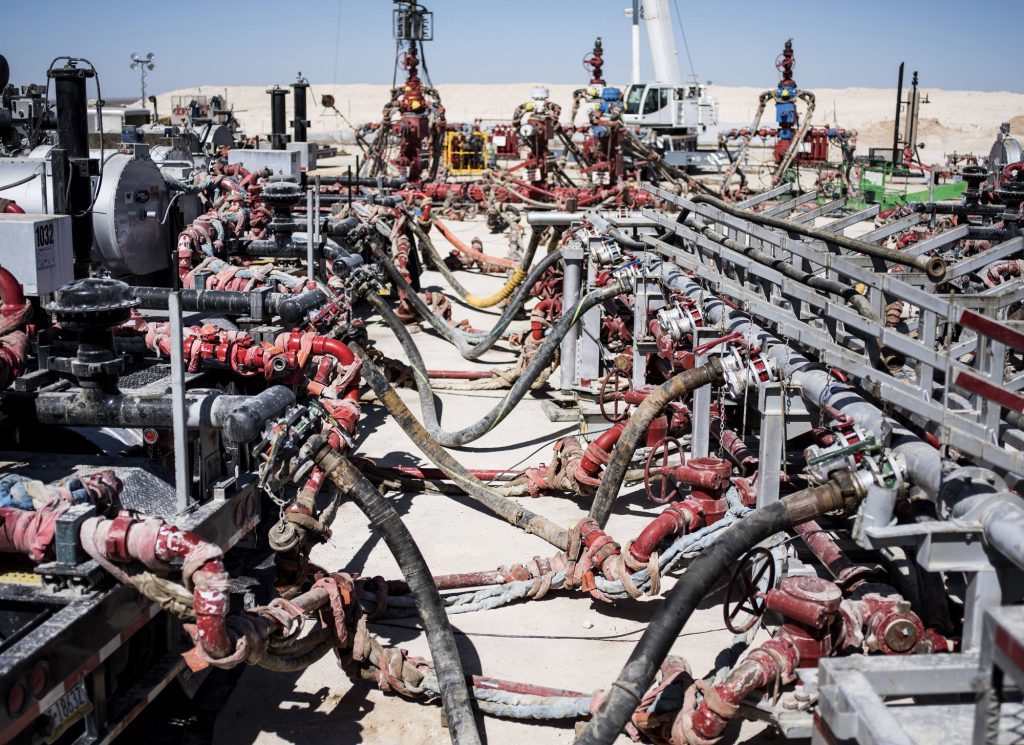
U.S. oil strengthened against the global Brent benchmark, reducing the gap to the narrowest in five months amid declining stockpiles.
West Texas Intermediate futures in New York fell 0.6 percent while Brent in London slipped 0.9 percent, narrowing the gap gap between the grades to $4.15 a barrel. The convergence belies concern that WTI’s recent jump — spurred by a record 10 weekly declines in American stockpiles — will encourage higher production. Rigs drilling for crude in the U.S. have risen to the most since September.
“It follows the trend with the declining inventories in Cushing, Oklahoma, which has been strengthening WTI relative to Brent,” says Bjarne Schieldrop, chief commodities analyst at SEB AB in Oslo. It could be bearish for Brent “because that widening spread was an important element for why it rallied over the summer. You could lift Brent without stimulating shale too much.”
WTI has increased to a three-year high as the U.S. dollar dropped for a seventh straight week, the longest stretch of declines since 2010. A weaker greenback typically boosts investor appetite for raw materials priced in the American currency. Yet, oil’s surge is making more production in the U.S. and elsewhere profitable, which in turn will push supply even higher.
WTI for March delivery lost 40 cents to $65.74 a barrel on the New York Mercantile Exchange at 12:57 p.m. in London. The U.S. benchmark gained $2.77 last week to close at $66.14. Total volume traded was about 42 percent above the 100-day average.
Brent for March settlement fell 62 cents to $69.90 a barrel on the London-based ICE Futures Europe exchange. Prices climbed 2.8 percent last week.
Iranian Oil Minister Bijan Namdar Zanganeh said that crude at $60 a barrel is “good,” and warned higher prices will encourage production of more expensive supplies such as shale, causing prices to drop again.
“The news overall so far today has been bearish — the rig count was up and Iran’s oil minister warned about too high prices,” says Giovanni Staunovo, commodity analyst at UBS Group AG.
American drillers last week added 12 oil rigs, the most since March, according to Baker Hughes data Friday. That may signal a further increase in U.S. crude output, which jumped to 9.88 million barrels a day in the seven days to Jan. 19, the highest level in weekly data compiled by the Energy Information Administration since 1983.
Oil-market news:
Hedge funds reported record wagers on continued price increases for both U.S. and global oil benchmarks, along with gasoline and diesel. Oil output at Iran’s West Karoun oil fields is currently at 305,000 barrels a day, Iran Oil Ministry news service Shana reported, citing minister Zanganeh. Global liquids stockpiles have fallen to about 2.9 billion barrels and are “ not far” from the five-year average, Eni SpA CEO Claudio Descalzi said in London. Iraq is targeting 5 million barrels a day of oil-export capacity from the south of the country this year, up from 4.6 million, Oil Minister Jabbar Al-Luaibi said in London. Suncor said its Fort Hills project is continuing a steady ramp up of production. It is expected to reach a plateau of 180,000 barrels a day in the coming months.
Recommended for you
